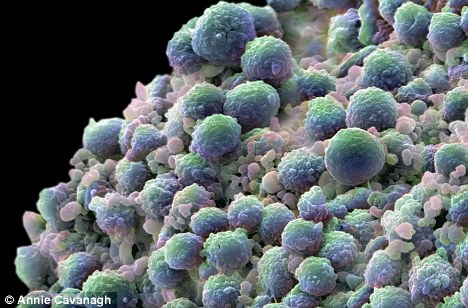
科学家们已经找到一系列控制前列腺癌生长和扩散的基因
近日,科学家们研究发现控制前列腺癌生长和扩散的一系列“操纵”基因。
在英国,前列腺癌在男性癌症患者中是最为常见,每年有大约37000病人被诊断出患有前列腺癌,并有超过10000因此丧生。
苏格兰爱丁堡医学研究中心的科学家们将研究锁定在了一种基质细胞上,它虽然不是癌细胞,但在控制疾病扩散中扮演着重要的角色。
报告中称,他们通过比较从正常人、前列腺癌患者和前列腺胚胎中分离得到的基质细胞发现,确认有15个基因和癌症的生长相关。使用药物抑制这些基因能有效减缓甚至是控制住前列腺癌的恶化。
研究员Axel Thomson博士说道:“虽然基质细胞不是癌细胞,但它们在“操纵”癌细胞生长扩散中起着重要作用。”
科学家们称需要更进一步的研究来证实这些基因是如何控制癌症的扩散速度的,这对于未来研发能控制,治疗前列腺癌的新药物有着重要的意义。(生物探索 Jun译)
推荐生物探索英文论文原文摘要:
Identification of stromally expressed molecules in the prostate by tag-profiling of cancer-associated fibroblasts, normal fibroblasts and fetal prostate
The stromal microenvironment has key roles in prostate development and cancer, and cancer-associated fibroblasts (CAFs) stimulate tumourigenesis via several mechanisms including the expression of pro-tumourigenic factors. Mesenchyme (embryonic stroma) controls prostate organogenesis, and in some circumstances can re-differentiate prostate tumours. We have applied next-generation Tag profiling to fetal human prostate, normal human prostate fibroblasts (NPFs) and CAFs to identify molecules expressed in prostatic stroma. Comparison of gene expression profiles of a patient-matched pair of NPFs vs CAFs identified 671 transcripts that were enriched in CAFs and 356 transcripts whose levels were decreased, relative to NPFs. Gene ontology analysis revealed that CAF-enriched transcripts were associated with prostate morphogenesis and CAF-depleted transcripts were associated with cell cycle. We selected mRNAs to follow-up by comparison of our data sets with published prostate cancer fibroblast microarray profiles as well as by focusing on transcripts encoding secreted and peripheral membrane proteins, as well as mesenchymal transcripts identified in a previous study from our group. We confirmed differential transcript expression between CAFs and NPFs using QrtPCR, and defined protein localization using immunohistochemistry in fetal prostate, adult prostate and prostate cancer. We demonstrated that ASPN, CAV1, CFH, CTSK, DCN, FBLN1, FHL1, FN, NKTR, OGN, PARVA, S100A6, SPARC, STC1 and ZEB1 proteins showed specific and varied expression patterns in fetal human prostate and in prostate cancer. Colocalization studies suggested that some stromally expressed molecules were also expressed in subsets of tumour epithelia, indicating that they may be novel markers of EMT. Additionally, two molecules (ASPN and STC1) marked overlapping and distinct subregions of stroma associated with tumour epithelia and may represent new CAF markers.







